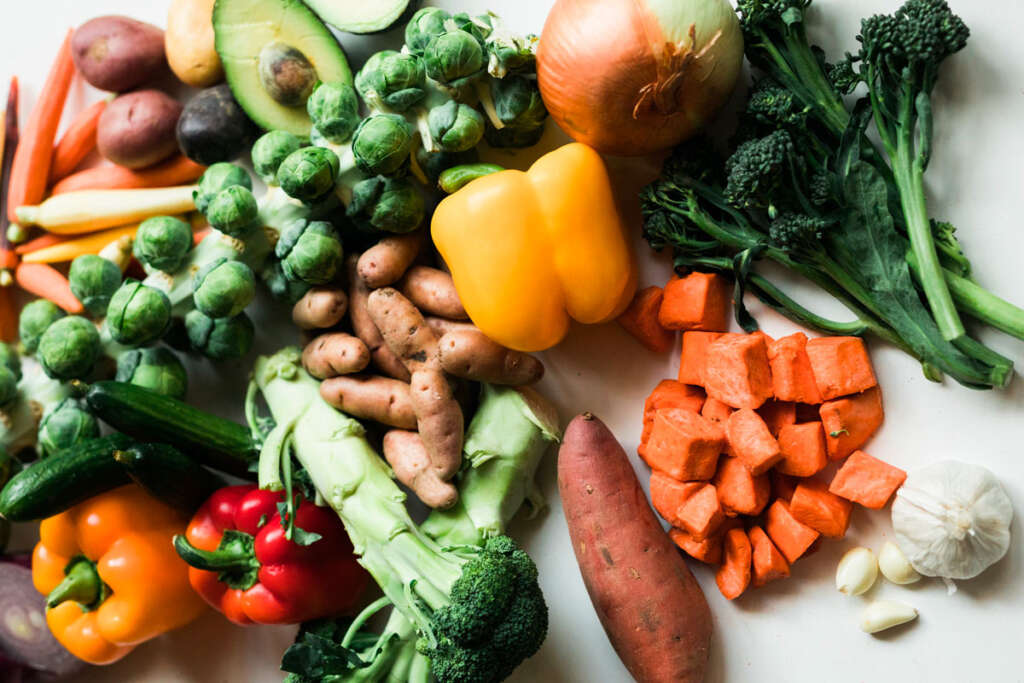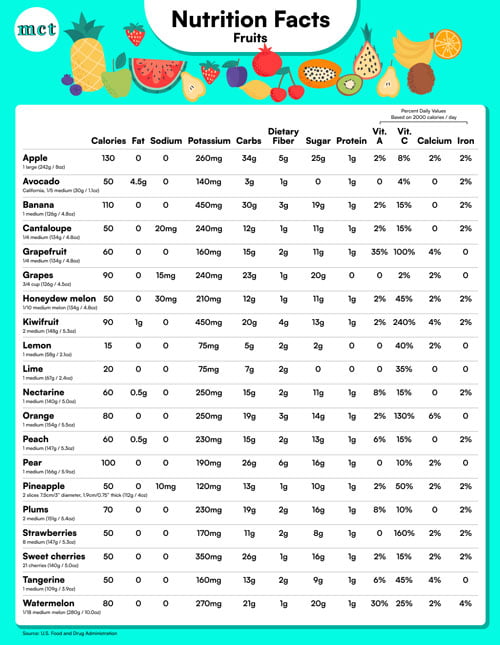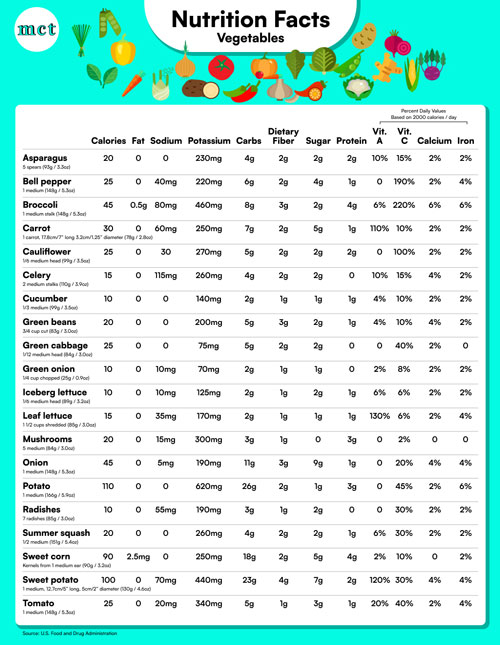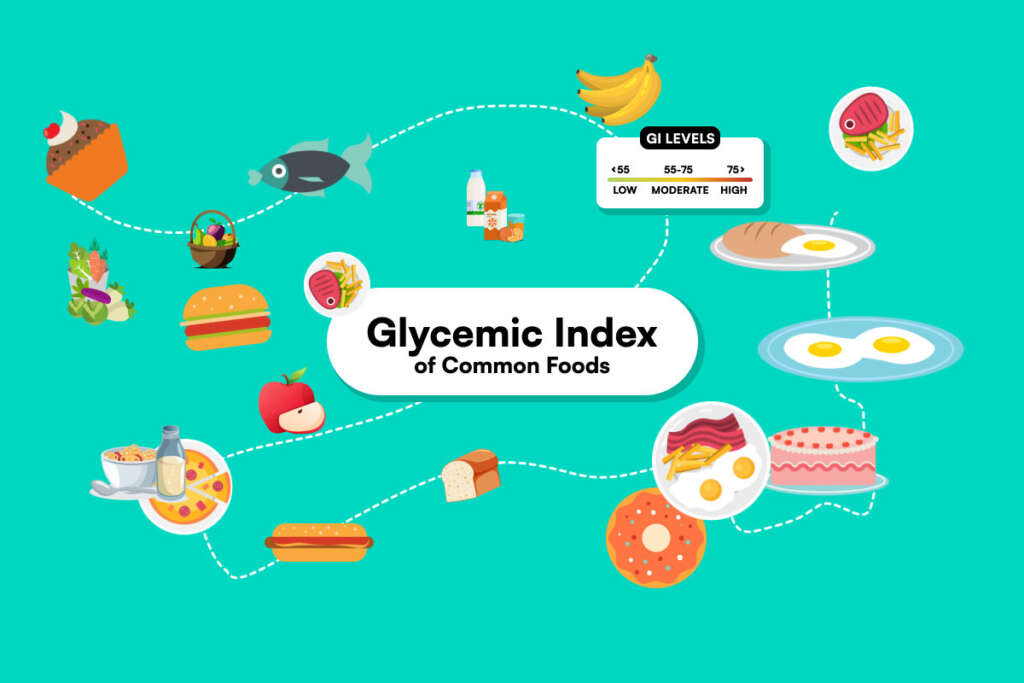Here’s an interesting stat: about 30% of cancer cases and 50% of cardiovascular disease (CVD) rates are related to diet. Anyway, I wanted to write about how fruits and veggies have been losing their nutritional content for the past few decades but I found interesting sources about the health benefits of consuming fruits and vegetables (because despite the decrease they are still very healthy!). We all know consuming them is good for us but why exactly? In this article, we will dive into why eating vegetables (and fruits) is important. Their nutritional decrease will come in a later post.
Eating sufficient amounts of vegetables and fruits on a regular basis increases your protection against chronic diseases, including cancer, cardiovascular and neurodegenerative diseases. Fruits and vegetables are rich in micronutrients (vitamins, minerals), fibers, and phytochemicals.
Phytochemicals are chemical compounds that are produced by plants to help them resist fungi, bacteria, infections, as well as consumption by other animals. Many phytochemicals have positive impact on human health as they act as antioxidants, anticarcinogens, and immunomodulators. Carrots, green leafy vegetables, pineapple, citrus fruits, papaya and mango – to name a few – are high in chemopreventive phytochemicals. In other words, they can help you to prevent cancer.
WHO recommends a daily intake of at least 400g of fruits and vegetables which includes all seven color classes: red, yellow-green, red-purple, orange, orange-yellow, green, white-green. This color variety can ensure that you consume the most possible phytochemicals.
| Phytochemical | What contains it | What affects it |
| Ascorbic acid | Broccoli, cabbage, cantaloupe, citrus fruits, guava, kiwifruit, leafy greens, peppers, pineapples, potato, strawberry, tomato, watermelon | Cardiovascular disease, healthy immune system, scurvy prevention, wound healing |
| Alpha-Carotene | Apricots, broccoli, Brussels sprouts, cabbage, cantaloupe, carrots, green beans, kale, kiwifruit, lettuce, lima beans, mango, papaya, peaches, peas, prunes, spinach, squash, sweet potato | Atherosclerosis, coronary artery disease, ischemic, stroke, tumor growth |
| Beta-Carotene | Dark green vegetables (such as collards, broccoli, spinach, turnip greens, Swiss chard), orange vegetables (such as carrots, pumpkins, sweet potato), orangeflesh fruits (such as apricot, cantaloupe, mango, nectarine, orange, papaya, peach, persimmon, pineapple), red pepper, tomato | Cancer, cataracts, coronary artery disease, chronic fatigue, ischemic stroke, heart disease, night blindness prevention, provitamin A activity, psoriasis |
| Lycopene | Autumn olive, Brazilian guava, papaya, tomato, watermelon, red grapefruit | Atherosclerosis, breast and prostate cancer, heart disease, male infertility |
| Xanthophylls | Cantaloupe, corn, okra, spinach, summer squash, turnip greens, sweet corn | Atherosclerosis, cancer, macular degeneration |
| Fiber | Most fruits and vegetables, pulses (legumes), and nuts | Diabetes, heart disease, colorectal cancer |
| Folicin or folic acid | Dark green vegetables (such as spinach, mustard greens, butterhead lettuce, romaine lettuce, broccoli, Brussels sprouts, okra), legumes (such as lentils, chickpeas, green peas), asparagus | Birth defects, cancer, heart disease |
| Allicin, diallyl sulfide, glucosinolates, indoles, isothiocyanates | Broccoli, Brussels sprouts, chives, garlic, horseradish, leeks, mustard green, onions | Blood pressure, cancer, hypercholesterolemia, diabetes |
| Anthocyanidins (cyanidin, malvidin, delphinidin, pelargonidin, peonidin, petunidin) | Red, blue, and purple fruits (apple, blueberry, blackberry, cranberry, grape, nectarine, peach, plum, prune, pomegranate, raspberry, strawberry) | Heart disease, cancer initiation, diabetes, cataracts, blood pressure, allergies |
| Flavan-3-ols (epicatechin, epigallocatechin, catechin, gallocatechin) | Apples, apricots, blackberries, plums, raspberries, strawberries, cherries | Platelet aggregation, cancer |
| Flavanones (hesperetin, naringenin, eriodictyol) | Citrus such as oranges, grapefruits, lemons, limes, tangerines | Cancer |
| Flavones (luteolin, apigenin, chrysin) | Artichoke, celeriac, celery, guava, parsley, peppers, rutabaga, spinach | Allergies, cancer, heart disease |
| Flavonols (kaempferol, myricetin, quercetin, rutin) | Broccoli, cranberry, kale, lettuce, onions, peppers, snap bean, apples, cherry, berries | Cancer initiation, capillary protectant, heart disease |
| Isoflavonoids (genistein, daizein, glycetein, formonetin) | Soy beans | Breast cancer, cardiovascular diseases, osteoporosis |
| Hydroxybenzoic acids (gallic acid, protocatechuic acid, syringe acid, vanillic acid) | Black olive, black raspberry, carrot, dates (dried, fresh), green chicory, kiwi, mushrooms, red chicory, strawberry | Endothelial dysfunction, hypertension |
| Hydroxycinnamic acids (caffeic acid, ferulic acid, sinapic acid, chlorogenic, acid, coumaric acid) | Apple, blueberry, broccoli, cabbage, carrot, cherry, cranberry, eggplant, grapes, lemon, pear, orange, grapefruit, peach, potato, spinach | Atherosclerosis, antimicrobial effect, antiinflammatory, cancer, osteogenic |
| Proanthocyanidins | Apple, cranberry, grape, pomegranate | Cancer |
| Limonene | Citrus such as grapefruit and tangerine | Cancer |
| Vitamin E (tocopherols) | Avocado, nuts (such as almonds, cashew nuts, filberts, macadamia nut, peanuts, pistachio, walnuts), lentils, chickpeas, green leafy vegetables | Cancer, diabetes, heart disease, immune system, LDL oxidation |
| Vitamin K | Crucifers (such as broccoli, Brussels sprouts, cabbage), green onions, lentils, nuts, leafy greens | Osteoporosis, synthesis of procoagulant factors |
The main components
- Dietary fiber is the edible portion of plants, including polysaccharides, oligosaccharides, lignin, and other plant materials, that are not broken down by enzymes in the human small intestine but are eventually fermented by the microflora in the colon.
- Vitamins are not sufficiently synthesized in the human body, so we mostly have to get them from fruits and vegetables. With the exception of B12 and D, all the other essential vitamins can be found in fruits and vegetables.
- Minerals are also important for humans because they help synthesizing and stabilizing proteins and nucleic acids. Fruits and vegetables are sources of manganese, copper, iron, zinc, sodium sulphur and selenium.
- Even the molecules that are responsible for the yellow, orange and red colors of certain fruits and vegetables have health benefits for humans. Due to their antitumor properties they have a role in preventing cancer, especially breast and prostate cancers.
- Phytoesterols are very similar to cholesterol that reduce the intestinal cholesterol absorption and they are recommended to consume for reducing LDL-cholesterol and CVD risk. For increased phytosterol intake, look for vegetable oils, nuts, seeds, legumes, wheat germ, bran, and of course fruits and vegetables in the stores.
Benefits of eating more fruits and vegetables
Cardiovascular disease is a leading cause of death worldwide, responsible for 18 million deaths in 2019. In 2000, this number was 14 million. Changing lifestyle, unhealthy diet and aging populations are all contributing factors to this increase. Already 3 servings (230g) of fruits and vegetables a day can have a positive effect on your cardiovascular health. 10 servings a day can greatly minimize the risks.
In the Mediterranean Diet Prevention (PREDIMED) study, researchers studied the health effects of Mediterranean diet on different groups. One group had extra virgin olive oil and another group had a mix of nuts (almonds, walnuts, and hazelnuts) as supplement to their Mediterranean diet. In the olive group, the incidence of CVD was reduced by 30%, while in the nut group it was reduced by 28%.
Eating more than 5 servings of fruits and vegetables a day can significantly reduce the risk of CHD (coronary heart disease). But interestingly, this is mostly true for Western populations and less so for Asian populations.
More nuts and peanuts, which have positive effects on lipids and lipoproteins, can also decrease the risk of CVD and CHD.
As fruits and vegetables improve glucose and glycated hemoglobin levels, you can reduce the risk of type 2 diabetes, too, by consuming more fruit, vegetables, nuts, and whole grain. By the way, here’s five healthy fruits you should eat more often.
Life expectancy and healthcare
In Denmark, researchers studied what health and financial effects a higher intake of fruits and vegetables would impose. The average daily intake of fruits and vegetables in Denmark was around 250g per capita at that time (early 2000s), which they increased to 400g and 500g in the research. This improved the life expectancy by 0.8 and 1.3 years and prevented 19%-32% of cancer incidence. Interestingly, this didn’t have an impact on overall healthcare costs, because as the higher intake group lives longer, those people require healthcare for an extended period of time, which offsets the cost savings of the lower demand for cancer treatments. So, basically you might live longer if you consume lots of fruits and vegetables and that would’t be a burden on the healthcare system because your longer life is also healthier. On the other hand it wouldn’t reduce national healthcare expenses either.
A study in the U.S. concluded that higher intake of fruits and vegetables could save up to 2,000 dollars for each person in Medicare charges and savings. Depending on how higher the intake is, of course.
Food deserts
The weight-loss industry is a 46 billion dollar business in the U.S. with 68% of Americans being overweight or even obese, yet 48 million Americans are undernourished. This paradox is because many of these people live in areas with little or no access to quality, nutritious food – these are the food deserts. In addition, healthy food is more expensive than junk food. And for many, less delicious. Of course junk food tastes better because it’s pumped with addictive additives.
And here come canned products in play. Contrary to the belief, canned fruits and vegetables actually don’t lose their nutritional value. In fact, fresh fruits and vegetables lose much faster their nutrients than their canned counterparts. However, produce that’s packed in brine or syrup can lose phenolic compounds (they also help reduce cancer and heart disease). But they are mostly fine, and in some cases, carotenoid levels can be even higher in canned form: carrots, collard greens, spinach and sweet potato are richer in beta carotene and provitamin A (but peaches and tomatoes have a lower level in canned form).
A study conducted by the University of Illinois, and funded by the Steel Packaging Council (so taking the results with a little grain of salt might be advised), found that canning is quite beneficial. It doesn’t impact vitamin C and fiber content but it increases the fiber availability when you heat the food. Vitamin A levels are mostly unaffected but they are actually even higher in pumpkin. Also, in most cases, canned vegetables and beans provide the same nutritional value as fresh produce.
And how does this relate to people with more limited budget? Canned vegetables are about 20% cheaper than fresh ones (or at least they were when the research was done). In case of fruits, it’s not that easy to determine as many fruits are packaged in syrup and many fruits cannot be canned. But the ones that are packaged in water or natural fluids are also a great alternative.
Wrapping up
Eat as much fruits and vegetables (canned or fresh) as you can and you will enjoy all these benefits:
- Better bone and and eye health
- Lower risk of CVD,
- Lower risk of certain types of cancer
- Lower risk of diabetes and overweight
- Lower risk of pulmonary disease
- Lower risk of arthritis
- Lower risk of skin diseases
- And lower risk of neurodegenerative diseases.
By eating more fruits and vegetables, your micronutrient and fiber intake increases, your energy intake stays the same and your total fat ideally decreases.
Sources:
“Contribution of Fruits and Vegetables to Human Nutrition and Health” by Elhadi M. Yahia, Pablo García-Solís and María Elena Maldonado Celis, 2017
“Increased intake of fruit and vegetables: Estimation of impact in terms of life expectancy and healthcare costs” by Jens Gundgaard, Jørgen Nørskov Nielsen, Jens Olsen and Jan Sørensen, 2002
“Nutrition & Costs Comparisons of Select Canned, Frozen and Fresh Fruits and Vegetables” by Steven Miller and Bill Knudson, 2012
“The effect of increasing fruit and vegetable consumption on overall diet: a systematic review and meta-analysis” by Sharon L. Fulton, Michelle C. McKinley, Ian S. Young, Chris R. Cardwell and Jayne V. Woodside, 2014
“The High Cost of Not Consuming Fruits and Vegetables” by Lydia A. Bazzano, 2006




